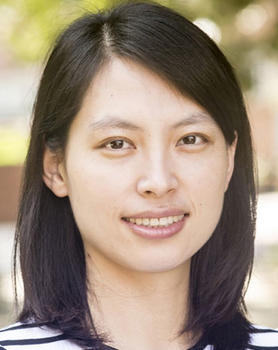A George Mason University professor is working on ways to measure one of the great intangibles of today’s companies: employee talent.
The war for talent is heating up with no sign of stopping, as companies vie for the loyalty of the most skilled and educated employees. Lin Sun, assistant professor of finance at George Mason University School of Business, attributes this to a decisive shift in where business value comes from.
“In the old days, a firm’s assets were mostly physical and showed up on the balance sheet. In the 21st century, intellectual capital has become a hidden but crucial driver of company growth. These assets are intangible and not normally reflected in the balance sheet. They have to do with knowledge, skilled workforce, culture, etc.” she says.

There is an academic term for the portion of value creation originating from a talented workforce–organizational capital. But despite its obvious significance, there is no clean, universally accepted way to measure organizational capital. Some scholars use the accounting metric SG&A expenditures (selling, general and administrative expenses) as a proxy, but as Sun points out, “it’s very indirect. It includes a wide range of non-production expenses such as rent, utilities, computer equipment, marketing and advertising, management and administrative salaries, and more.”
Understanding organizational capital is more than just another problem for academics to solve. It’s one of the only ways business leaders can know for sure that they’re getting what they paid for. “We know that talented workers create value for the firm, but they also require higher pay,” Sun says. “Can firms exploit economic rents from skilled labor?”
Along with co-authors Hao Jiang (of Michigan State University), Christopher A. Parsons (of University of Southern California) and Sheridan Titman (of University of Texas at Austin), Sun is investigating a possibly pertinent metric. The H-1B visa program grants overseas citizens within “specialty occupations” the right to live and work in the United States. In recent years, the majority of H-1Bs have gone to highly qualified STEM (science, technology, engineering and mathematics) workers from India and China. Sun and her collaborators hypothesized that the number of H-1B visa applications filed by a company shows the company’s ability to attract top talents. And because H-1B visas are apportioned via lottery, the number of applications should correspond to the amount of actual hires.
In their early-stage study, the researchers looked at a sample of publicly traded firms through the years 2008-2020. After categorizing the firms by volume of H-1B applications, they found that firms in the top quintile offered industry-adjusted excess returns to shareholders averaging about 5 percent per year higher than firms in the bottom quintile or those with no H-1B application. The stock market outperformance seems to be directly related to higher-than-expected growth in fundamentals such as R&D expenses, sales and earnings.
In sum, the researchers observe that the organizational capital represented by the H-1B workforce directly benefits businesses and their shareholders.
That certainly strengthens the case for H-1Bs as a useful proxy. But the surprising part came when the companies were classed by location as well as H-1B applications. H-1B workers were highly concentrated in major cities, such as Seattle, San Francisco, and New York. Companies in those cities appeared to accrue more organizational capital–that is, better operational performance and higher returns--from hiring H-1B workers than peers in more remote locations. Even firms with low or moderate volumes of H-1B applications got more bang for the buck by virtue of being situated in an H-1B hub.
For Sun, this is evidence of what she calls “local knowledge spillover”. “The location–where you place the talents–has an amplifying effect,” she says. “The rationale is, if you place a talent in a cluster of talents, they learn from each other, inspire each other, and they will all do better. It’s a spillover effect.” Presumably, the effect would also extend to their native-born colleagues.
As a candidate for president, Donald Trump made H-1B restrictions a key theme of his campaign, and H-1B approval rates plummeted under his administration. Yet Sun’s preliminary insights contradict the zero-sum notion of labor market protectionism. “Hiring more foreign talents would improve the productivity of domestic workers as well.” she says.
Though still evolving, her research indicates that organizational capital is not a fixed quantity. Rather, it responds to contextual factors such as geography and political conditions. Digging deeper into this multi-dimensional response will not only enrich scholarship on this topic, but will also improve business outcomes as well as employee well-being.
- May 28, 2025
- May 23, 2025
- May 7, 2025
- May 5, 2025
- April 30, 2025
